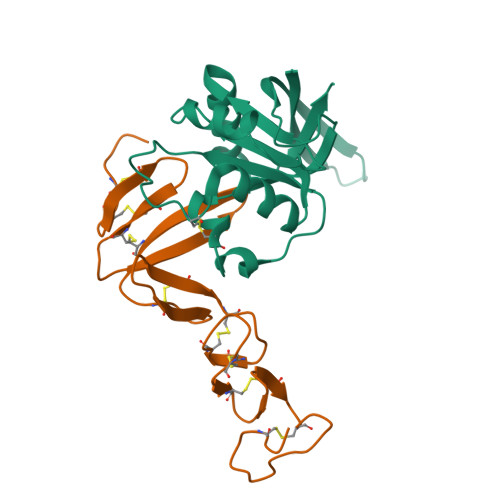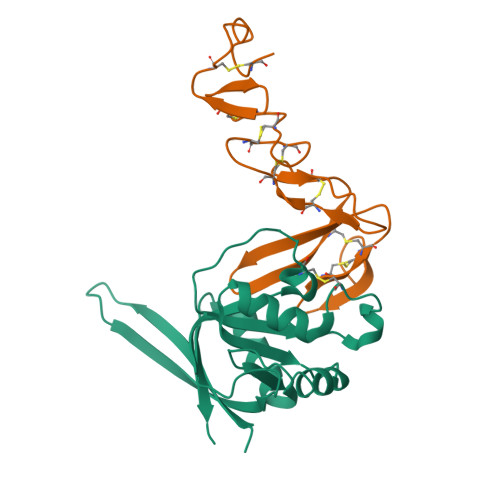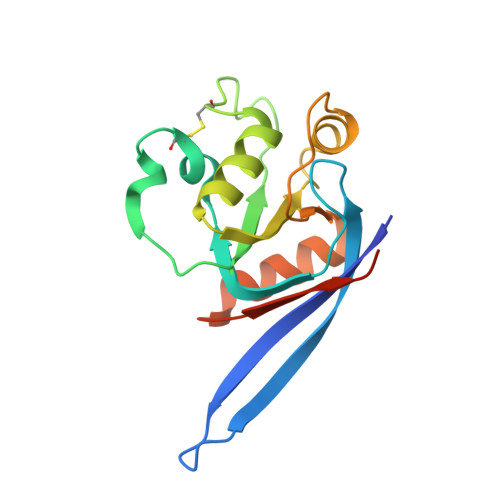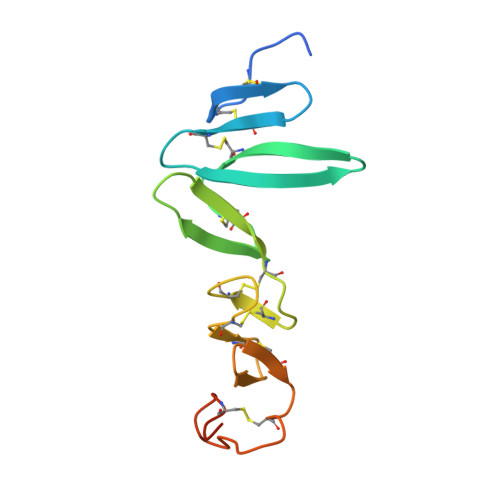Structures of Wnt-Antagonist Znrf3 and its Complex with R-Spondin 1 and Implications for Signaling.
Peng, W.C., De Lau, W., Madoori, P.K., Forneris, F., Granneman, J.C.M., Clevers, H., Gros, P.(2013) PLoS One 8: 83110
- PubMed: 24349440
- DOI: https://doi.org/10.1371/journal.pone.0083110
- Primary Citation of Related Structures:
4CDJ, 4CDK - PubMed Abstract:
Zinc RING finger 3 (ZNRF3) and its homolog RING finger 43 (RNF43) antagonize Wnt signaling in adult stem cells by ubiquitinating Frizzled receptors (FZD), which leads to endocytosis of the Wnt receptor. Conversely, binding of ZNRF3/RNF43 to LGR4-6 - R-spondin blocks Frizzled ubiquitination and enhances Wnt signaling. Here, we present crystal structures of the ZNRF3 ectodomain and its complex with R-spondin 1 (RSPO1). ZNRF3 binds RSPO1 and LGR5-RSPO1 with micromolar affinity via RSPO1 furin-like 1 (Fu1) domain. Anonychia-related mutations in RSPO4 support the importance of the observed interface. The ZNRF3-RSPO1 structure resembles that of LGR5-RSPO1-RNF43, though Fu2 of RSPO1 is variably oriented. The ZNRF3-binding site overlaps with trans-interactions observed in 2:2 LGR5-RSPO1 complexes, thus binding of ZNRF3/RNF43 would disrupt such an arrangement. Sequence conservation suggests a single ligand-binding site on ZNRF3, consistent with the proposed competing binding role of ZNRF3/RNF43 in Wnt signaling.
Organizational Affiliation:
Crystal and Structural Chemistry, Bijvoet Center for Biomolecular Research, Department of Chemistry, Faculty of Science, Utrecht University, Utrecht, The Netherlands.




















